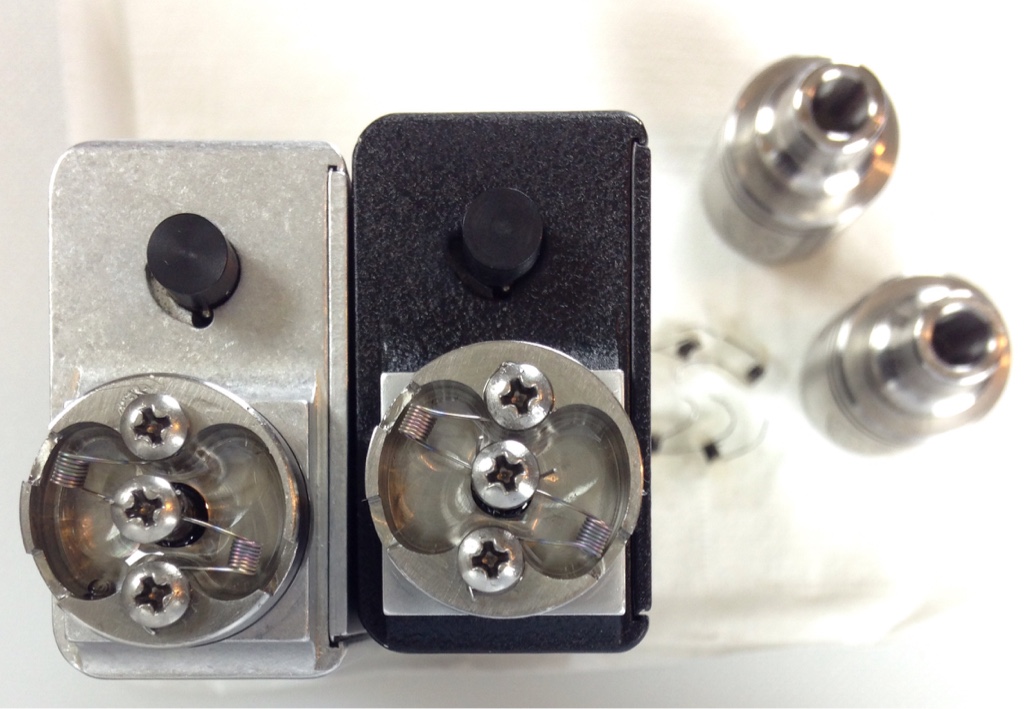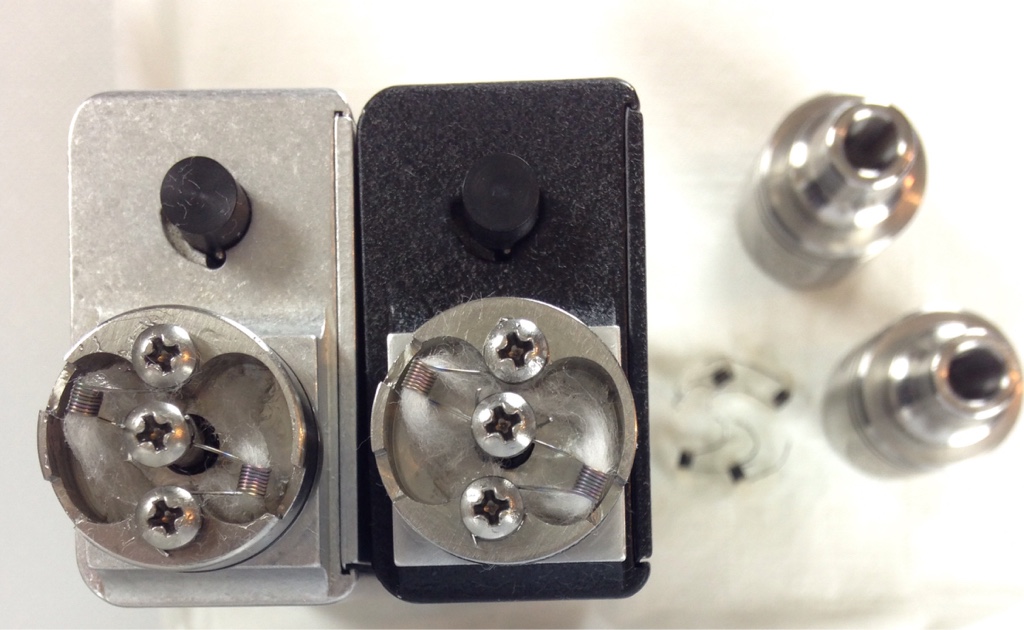Traditional micro coils have kicked up the rebuilding game to new levels by providing an more efficient vape by providing concentrated heat and increased flavor due to their compact diameter resulting in less power consumption and a coil sized to tweak / position for optimal air flow and wicking.
Well things have been changing. Lots of behind the and in front scenes work by Mac to bring the Tensioned aspect to the micro coil have resulted in an even more efficient and productive coil.
For the most part, previous contact coils micro coils were just that - coils that "visually" appeared to contact. They were wrapped by hand forming wire around a stationary object resulting in a "pretty" coil but not a coil with the efficiency or simplicity to duplicate as a micro coil wound under the proper amount of tension that the winds truly touched.
Enter the tensioned micro coil.
These coils are wound by tensioning resistance wire as you spin a rod (as in the artistic wire coil gizmo) a pin vice or several other user conceived jigs where the wire is stationary and held in tension as the jig turns.
Don't be confused by these new devices where a "jig" of sorts forms the wire around a rod by turning an attachment that grabs the wire and forms it around a rod. Yes, it does produce a pretty coil, but we theorize that is "visually perfecting an imperfect coil"
Tensioned Micro Coils (TMC's) are where the highest levels of efficiency are gained, they are easy for even the beginner to reproduce with the same results / resistance every time and provide a perfect heating element for your atomizer.
Off Topic but noteworthy: I just tore down and rebuilt two RDAs where I realized that 28ga is less efficient than 29ga when building dual coils in the 0.6 ohm net range. Why? Because I find that it continues to cook juice / dry wick after the fire button is released. This leads to increased, unnecessary juice consumption, and higher drain on your batteries for marginal gains in vapor production. The 28 was an experiment.
What takes longer to heat up takes longer to cool down. 29 lights up immediately and cools down equally as fast. Less caramelization of juice by after burn too.
I always use 29. Here's an example of the two identical builds - 8 Tensioned winds of 29 each at 1.6mm inside diameter netting 0.6 ohms:

Wicked with KGD:

Here's the method:
http://youtu.be/sVS37CCogK8
And since we're starting a new thread about the next big thing, let's include this about battery safety, calculating amps / watts and making sure that your build is within the safe limits of your battery
http://youtu.be/QQbWVHSiltQ
Well things have been changing. Lots of behind the and in front scenes work by Mac to bring the Tensioned aspect to the micro coil have resulted in an even more efficient and productive coil.
For the most part, previous contact coils micro coils were just that - coils that "visually" appeared to contact. They were wrapped by hand forming wire around a stationary object resulting in a "pretty" coil but not a coil with the efficiency or simplicity to duplicate as a micro coil wound under the proper amount of tension that the winds truly touched.
Enter the tensioned micro coil.
These coils are wound by tensioning resistance wire as you spin a rod (as in the artistic wire coil gizmo) a pin vice or several other user conceived jigs where the wire is stationary and held in tension as the jig turns.
Don't be confused by these new devices where a "jig" of sorts forms the wire around a rod by turning an attachment that grabs the wire and forms it around a rod. Yes, it does produce a pretty coil, but we theorize that is "visually perfecting an imperfect coil"
Tensioned Micro Coils (TMC's) are where the highest levels of efficiency are gained, they are easy for even the beginner to reproduce with the same results / resistance every time and provide a perfect heating element for your atomizer.
Off Topic but noteworthy: I just tore down and rebuilt two RDAs where I realized that 28ga is less efficient than 29ga when building dual coils in the 0.6 ohm net range. Why? Because I find that it continues to cook juice / dry wick after the fire button is released. This leads to increased, unnecessary juice consumption, and higher drain on your batteries for marginal gains in vapor production. The 28 was an experiment.
What takes longer to heat up takes longer to cool down. 29 lights up immediately and cools down equally as fast. Less caramelization of juice by after burn too.
I always use 29. Here's an example of the two identical builds - 8 Tensioned winds of 29 each at 1.6mm inside diameter netting 0.6 ohms:

Wicked with KGD:

Here's the method:
http://youtu.be/sVS37CCogK8
And since we're starting a new thread about the next big thing, let's include this about battery safety, calculating amps / watts and making sure that your build is within the safe limits of your battery
http://youtu.be/QQbWVHSiltQ
Last edited:

